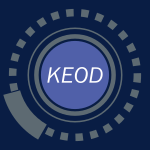24 papers:
 ECOOP-2015-MedeirosKRNG #c #preprocessor
ECOOP-2015-MedeirosKRNG #c #preprocessor- The Love/Hate Relationship with the C Preprocessor: An Interview Study (FM, CK, MR, SN, RG), pp. 495–518.
 DHM-2014-OhgiriYYKH #analysis #comparison
DHM-2014-OhgiriYYKH #analysis #comparison- Comparison of Gait Analysis by the Way of Semi-structured Interviews (MO, KY, HY, NK, HH), pp. 43–54.
 DUXU-TMT-2014-SchmuntzschF #design #how #smarttech
DUXU-TMT-2014-SchmuntzschF #design #how #smarttech- How Two become One — Creating Synergy Effects by Applying the Joint Interview Method to Design Wearable Technology (US, LHF), pp. 173–184.
 CAiSE-2014-BurnayJF #case study #elicitation #requirements #topic
CAiSE-2014-BurnayJF #case study #elicitation #requirements #topic- An Exploratory Study of Topic Importance in Requirements Elicitation Interviews (CB, IJ, SF), pp. 180–195.
 KEOD-2014-PintoA #axiom #case study #validation
KEOD-2014-PintoA #axiom #case study #validation- An e-Government Project Case Study — Interview based DEMO Axioms’ Benefits Validation (DP, DA), pp. 138–149.
 REFSQ-2014-AbeleinP #communication #developer #scalability
REFSQ-2014-AbeleinP #communication #developer #scalability- State of Practice of User-Developer Communication in Large-Scale IT Projects — Results of an Expert Interview Series (UA, BP), pp. 95–111.
 CHI-2013-BirnbaumBFDK #behaviour #identification #using
CHI-2013-BirnbaumBFDK #behaviour #identification #using- Using behavioral data to identify interviewer fabrication in surveys (BEB, GB, ADF, BD, ARK), pp. 2911–2920.
 CHI-2013-PriceJ #research
CHI-2013-PriceJ #research- Interview approaches to researching embodiment (SP, CJ), pp. 2907–2910.
 HIMI-LCCB-2013-YajimaHY #analysis #communication #design
HIMI-LCCB-2013-YajimaHY #analysis #communication #design- Application of Ethno-Cognitive Interview and Analysis Method for the Smart Communication Design (AY, HH, TY), pp. 649–657.
 RecSys-2013-HuY #learning #process #recommendation
RecSys-2013-HuY #learning #process #recommendation- Interview process learning for top-n recommendation (FH, YY), pp. 331–334.
 SEKE-2013-TofanGA #architecture #information management
SEKE-2013-TofanGA #architecture #information management- Improving Architectural Knowledge Management in Public Sector Organizations — an Interview Study (S) (DT, MG, PA), pp. 568–573.
 POPL-2012-BlackO #hoare #perspective
POPL-2012-BlackO #hoare #perspective- Presentation of the SIGPLAN distinguished achievement award to Sir Charles Antony Richard Hoare, FRS, FREng, FBCS; and interview (APB, PWO), pp. 1–2.
 DUXU-v2-2011-AgnerTF #usability
DUXU-v2-2011-AgnerTF #usability- Scenario and Task Based Interview to Evaluate Usability of Computer Assisted Data Collection (LA, PT, SBLF), pp. 349–358.
 HCD-2011-Ley #interactive #workflow
HCD-2011-Ley #interactive #workflow- Expert-Sided Workflow Data Acquisition by Means of an Interactive Interview System (DL), pp. 91–100.
 HCD-2011-YajimaSY #comprehension #problem #visualisation
HCD-2011-YajimaSY #comprehension #problem #visualisation- Understanding the Business Realities: An Interview Technique Which Can Visualize the Job Problems (AY, YS, TY), pp. 449–457.
 REFSQ-2011-ScheinholtzW #elicitation #requirements
REFSQ-2011-ScheinholtzW #elicitation #requirements- Interview Patterns for Requirements Elicitation (LAS, IW), pp. 72–77.
 OCSC-2009-TaylorT #analysis #game studies #multi #online
OCSC-2009-TaylorT #analysis #game studies #multi #online- A Content Analysis of Interviews with Players of Massively Multiplayer Online Role-Play Games (MMORPGs): Motivating Factors and the Impact on Relationships (JT, JT), pp. 613–621.
 REFSQ-2009-Berntsson-SvenssonGR #embedded #quality #requirements
REFSQ-2009-Berntsson-SvenssonGR #embedded #quality #requirements- Quality Requirements in Practice: An Interview Study in Requirements Engineering for Embedded Systems (RBS, TG, BR), pp. 218–232.
 CHI-2008-ChengET #source code #towards
CHI-2008-ChengET #source code #towards- Participant and interviewer attitudes toward handheld computers in the context of HIV/AIDS programs in sub-Saharan Africa (KGC, FE, KNT), pp. 763–766.
 ITiCSE-2005-Dick #analysis #assessment #design #learning #student
ITiCSE-2005-Dick #analysis #assessment #design #learning #student- Student interviews as a tool for assessment and learning in a systems analysis and design course (MD), pp. 24–28.
 RE-2005-CoheneE #analysis #design
RE-2005-CoheneE #analysis #design- Contextual Risk Analysis for Interview Design (TC, SME), pp. 95–104.
 WICSA-2004-MustapicWNCSFA #architecture #industrial
WICSA-2004-MustapicWNCSFA #architecture #industrial- Real World Influences on Software Architecture — Interviews with Industrial System Experts (GM, AW, CN, IC, KS, JF, JA), pp. 101–111.
 ITiCSE-2001-WilsonPS #distance #online #student
ITiCSE-2001-WilsonPS #distance #online #student- On-line dynamic interviews (ODIN): a means of overcoming distance in student-teacher relations (LW, JAP, RLS), p. 178.
 ICRE-2000-HubbardSM #assessment #performance #process #requirements
ICRE-2000-HubbardSM #assessment #performance #process #requirements- An Assessment of the Relative Efficiency of a Facilitator-Driven Requirements Collection Process with Respect to the Conventional Interview Method (RH, CNS, NRM), pp. 178–188.
 ECOOP-2015-MedeirosKRNG #c #preprocessor
ECOOP-2015-MedeirosKRNG #c #preprocessor DHM-2014-OhgiriYYKH #analysis #comparison
DHM-2014-OhgiriYYKH #analysis #comparison DUXU-TMT-2014-SchmuntzschF #design #how #smarttech
DUXU-TMT-2014-SchmuntzschF #design #how #smarttech CAiSE-2014-BurnayJF #case study #elicitation #requirements #topic
CAiSE-2014-BurnayJF #case study #elicitation #requirements #topic KEOD-2014-PintoA #axiom #case study #validation
KEOD-2014-PintoA #axiom #case study #validation REFSQ-2014-AbeleinP #communication #developer #scalability
REFSQ-2014-AbeleinP #communication #developer #scalability CHI-2013-BirnbaumBFDK #behaviour #identification #using
CHI-2013-BirnbaumBFDK #behaviour #identification #using CHI-2013-PriceJ #research
CHI-2013-PriceJ #research HIMI-LCCB-2013-YajimaHY #analysis #communication #design
HIMI-LCCB-2013-YajimaHY #analysis #communication #design RecSys-2013-HuY #learning #process #recommendation
RecSys-2013-HuY #learning #process #recommendation SEKE-2013-TofanGA #architecture #information management
SEKE-2013-TofanGA #architecture #information management POPL-2012-BlackO #hoare #perspective
POPL-2012-BlackO #hoare #perspective DUXU-v2-2011-AgnerTF #usability
DUXU-v2-2011-AgnerTF #usability HCD-2011-Ley #interactive #workflow
HCD-2011-Ley #interactive #workflow HCD-2011-YajimaSY #comprehension #problem #visualisation
HCD-2011-YajimaSY #comprehension #problem #visualisation REFSQ-2011-ScheinholtzW #elicitation #requirements
REFSQ-2011-ScheinholtzW #elicitation #requirements OCSC-2009-TaylorT #analysis #game studies #multi #online
OCSC-2009-TaylorT #analysis #game studies #multi #online REFSQ-2009-Berntsson-SvenssonGR #embedded #quality #requirements
REFSQ-2009-Berntsson-SvenssonGR #embedded #quality #requirements CHI-2008-ChengET #source code #towards
CHI-2008-ChengET #source code #towards ITiCSE-2005-Dick #analysis #assessment #design #learning #student
ITiCSE-2005-Dick #analysis #assessment #design #learning #student RE-2005-CoheneE #analysis #design
RE-2005-CoheneE #analysis #design WICSA-2004-MustapicWNCSFA #architecture #industrial
WICSA-2004-MustapicWNCSFA #architecture #industrial ITiCSE-2001-WilsonPS #distance #online #student
ITiCSE-2001-WilsonPS #distance #online #student ICRE-2000-HubbardSM #assessment #performance #process #requirements
ICRE-2000-HubbardSM #assessment #performance #process #requirements









